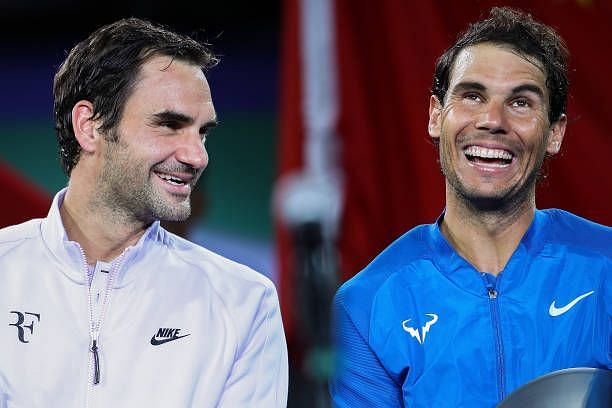
How Roger Federer solved the Rafael Nadal conundrum

Roger Federer and Rafael Nadal have met each other 38 times in the last 14 years, with Nadal leading their rivalry 23-15. But as lopsided as that seems, it was even more so not long ago.
At the start of 2017, Nadal's lead was 23-11; before 2015, he was ahead 23-10. But Federer defeated him at the 2015 Basel tournament, and won all four of their meetings in 2017 to close the gap to eight.
That Basel victory was Federer's first over Nadal in over three and a half years. Now, Nadal hasn't defeated Federer for nearly four years.
Before this year, Federer had never won three matches in a row against the man from Mallorca - while Nadal had three five-match winning streaks against Federer to boast of. But now, the Swiss maestro has a five-match winning streak against Nadal.
What were the changes that allowed Federer to flip the script and overcome his great rival in all four of their 2017 meetings? Three changes come to mind immediately:
More power with larger racquet head
Federer played with a 90 square inch racket from 2004 to 2013, while Nadal always played with a 100 inch racket. In late 2014 Federer switched to a 97.5 inch racket and since then Federer has won their last five meetings.
The smaller racket used till 2013 put Federer at a disadvantage in terms of power hitting. With the larger frame Federer is able to generate more power on his shots, resulting in more efficient offense.
Playing style: Reverting to pure offense
After losing a lopsided French Open final 6–1, 6–3, 6–0 back in 2008, Federer admitted that the defeat played on his mind and also affected him mentally during his 2008 Wimbledon loss to Nadal. From 2009 to 2014 Nadal beat Federer 11 times in 15 meetings; Federer always seemed tense during the matches, and there appeared to be some sort of mental block. His confident style of play seemed to disappear whenever he played Nadal.
But after recuperating from his knee injury in 2016, Federer slid down the rankings and had nothing to lose. That helped him play more aggressively and freely against Nadal, without allowing himself to get bogged down by past defeats. He is more relaxed and confident now.
His come-from-behind win after being a break down in the fifth and final set of the Australian Open is proof of this newfound confidence. He is taking the ball early and shortening the points, thus depriving Nadal of time.
Improved backhand
Before 2017, Federer's backhand was probably the weakest part of his arsenal; while beautiful to behold, it was not his most effective shot. Nadal used to pound Federer's backhand with ferocious and topspin-heavy forehands, until he got a shanked or misfired response.
While recovering from his injury, Federer worked hard on improving his backhand. The coaching advice given by Stefan Edberg (who had one of the best backhands around) and currently Ivan Ljubicic to hit more topspin backhands and to come over the ball instead of slicing has paid rich dividends.
At the Australian Open, Federer hit 14 backhand winners against Nadal as compared to the four he hit during his semi-final loss to Nadal in 2012. The shot has improved so significantly that as the two played more matches later in the year, Nadal started avoiding the Federer backhand.
The strategy that Nadal had employed for the last decade was suddenly not working, and Nadal seemed short of ideas on how to play this new and improved Federer. In the three matches after the Australian Open, Nadal has not taken a single set off Federer.
The rest and recuperation plan that Federer followed in 2017 has resulted in him playing some of the best tennis of his life. As one commentator said during the Australian Open final, "The 35-year-old Roger Federer is playing like a 25-year-old."
Federer's four victories over Nadal in 2017 seem to have destroyed the bogey which was in Federer's mind. The Swiss star will look forward to carry this newfound confidence against Nadal into 2018.